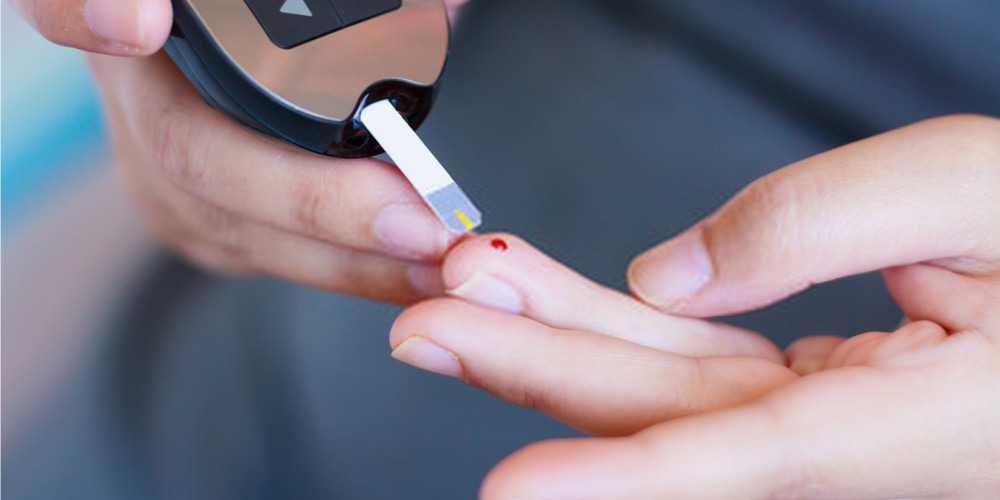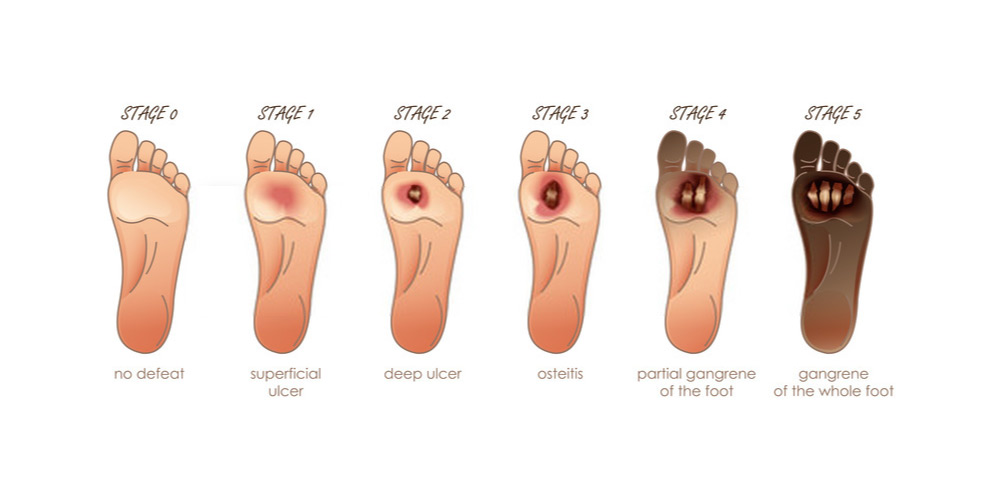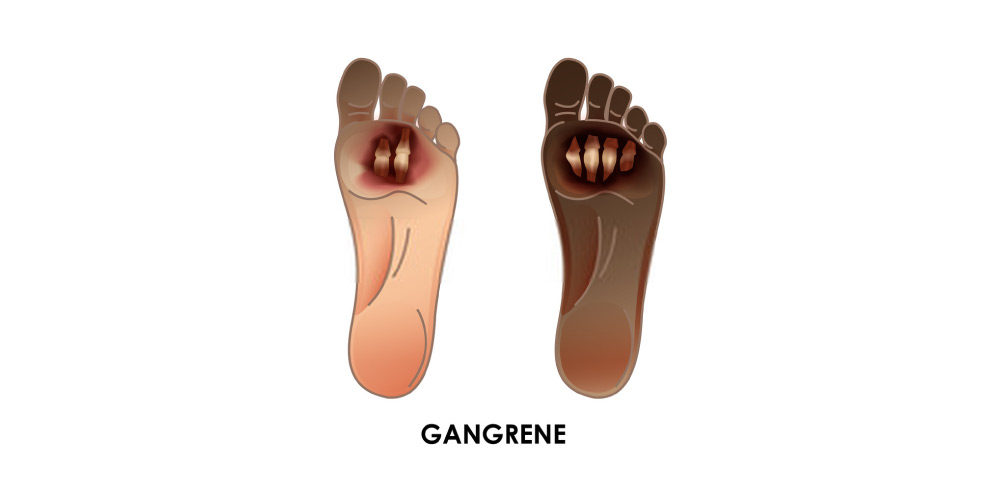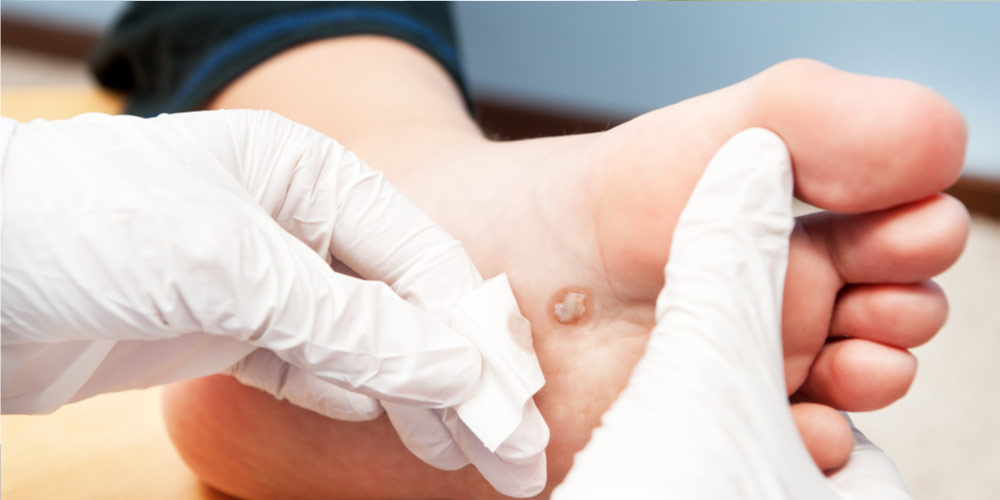
Complications that occur due to diabetes are very common non-traumatic types of injuries in the lower limbs of the body.
People who already suffer from diabetes are prone to developing the condition of diabetic foot ulcers. Such a foot ulcer develops when a wound or an open sore won’t heal completely and becomes ulcerated. These ulcers are commonly found at the bottom of the foot.

Redness and swelling of the skin of the foot are the common initial signs of a diabetic foot ulcer. This occurs in the area surrounding the wound or cut. Sometimes, the skin also bulges out and may even turn discolored. This is just the beginning, the symptoms keep aggravating with time and increase the chances of possible complications.
Table of Contents
Let’s get detailed information about the complications that can arise due to diabetic foot ulcers:

Skin and bone infections
Diabetic foot ulcers are much prone to infections. If you delay the treatment of diabetic foot wounds and continue to walk on it, the wound can deepen and reach the bones and tendons as well. A lack of oxygen due to peripheral artery disease in such a case can cause infections in the skin, bones, and tendons.
Foot deformities
Prolonged and uncontrolled diabetes, coupled with diabetic foot infections weaken the muscles and bones in your feet, resulting in foot deformities over time. The weakened bones can even break or change shape if pressurized excessively. Untreated diabetic wounds can thus lead to deformities like Charcot foot, hammertoes and claw feet.
Abscess formation
If the diabetic foot wound catches an infection, it results in the formation of an abscess. The abscess contains the infectious material that keeps oozing out of it. It can be really problematic to even wear socks or footwear at all in such a condition
Partial or complete gangrene

If diabetic foot ulcer is not treated in time, the skin tissues neighboring the foot wound can die due to lack of sufficient blood and oxygen, leading to the formation of a black tissue called ischemia.
Ischemia is one of the first signs of gangrene in the foot. This gangrene can spread to the entire foot and result in the death of skin tissues in the complete foot.
Foot amputation
Foot amputation is one of the most severe complications of untreated diabetic foot ulcers. Severe infections, abscess, and gangrene in the foot make it impossible for the foot ulcer to heal. In such cases, the only option to prevent the infection from spreading to the bloodstream is amputation of the affected foot. Thus, if you delay diabetic foot ulcer treatment for a very long time, you may risk losing your foot.
Sepsis
If the infection in the diabetic foot ulcer becomes deep enough and reaches the bones or tendons, immediate treatment is necessary. Otherwise, this infection can spread to the bloodstream and lead to a condition known as sepsis. Certain kinds of bacteria in the infection can also lead to Necrotizing Fasciitis (Flesh-eating Disease). Both these complications can even have life-threatening implications.
Tips to prevent the chances of these complications of diabetic foot ulcers
- Keep your diabetes in check. Eat the right food and exercise regularly to maintain healthy blood sugar levels. Have lots of dietary fibers and unsweetened fresh juices for a healthy body. (Also Read: Diabetic foot ulcer home treatment)
- Hygiene is a must! Maintain proper hygiene of your feet. Wash them daily with warm water and mild soap and look out for any loss in sensation.
- Regularly check your feet for any cuts, injuries, corns, blisters or calluses. If you see one, consult your podiatrist without delay.

- Trim your toenails on a regular basis. Do not trim them too short.
- Do not wear poorly-fitted footwear. Avoid tight shoes and sandals. Rather, prefer slippers or close-toed shoes.
- Keep your feet elevated and stay active to maintain proper blood circulation to the feet.
- If you are a smoker, quit smoking because this unhealthy habit can create additional problems for you. Smoking dangerously affects the blood circulation that is just another cause of worry that you can avoid.
And last but the most important tip, if you notice any signs or symptoms of a diabetic foot wound, do not delay consulting a doctor. Timely consultation and treatment of diabetic foot ulcers can save you from the complex treatments and serious complications.
Take Away
While living with diabetes you should be really careful with your diet and lifestyle. It is the first step that gives you some protection against the chances of diabetic foot ulcers.
As you have seen there are various complications accompanying unattended diabetic foot ulcers, get medical help in time. The moment you notice some blister or callus in your feet, reach out to a specialist. It is much easier to treat the foot ulcers in the initial stages.
So, if you require to consult a specialist doctor regarding the treatment of diabetic foot ulcers, you can come to Pristyn Care. Our highly experienced doctors are ready to help you in all possible ways.
Also Read:
- How to get rid of diabetic foot ulcer?
- Diabetic foot ulcer homeopathic treatment
- Diabetic foot ulcer ointment









